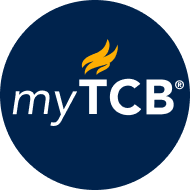


Members of The Conference Board get exclusive access to the full range of products and services that deliver Trusted Insights for What's Ahead ® including webcasts, publications, data and analysis, plus discounts to conferences and events.
02 April 2021 / Report
This study looks at how organizations assess and leverage the return on investment (ROI) of their inclusion efforts, including but not limited to individual diversity, equity, and inclusion (DEI) programs and culture change initiatives, to capture what organizations are currently doing as well as propose solutions and insights on how to better align DEI with business results.
Survey and interview analyses provide key insights on the following themes:
The report also includes The ROI of Inclusion Tool Kit, a guide that applies the concepts from the ROI Institute‘s methodology to DEI initiatives and skills.
This study looks at how organizations assess and leverage the return on investment (ROI) of their inclusion efforts, including but not limited to individual diversity, equity, and inclusion (DEI) programs and culture change initiatives, to capture what organizations are currently doing as well as propose solutions and insights on how to better align DEI with business results.
Survey and interview analyses provide key insights on the following themes:
The report also includes The ROI of Inclusion Tool Kit, a guide that applies the concepts from the ROI Institute‘s methodology to DEI initiatives and skills.
The positive connections between diversity, equity, and inclusion (DEI) in the workplace and business results have been documented for years. But examining the business benefits of diverse representation without considering equity and inclusion provides a limited picture of DEI’s true potential. Creating a fair and inclusive work environment where workers of all backgrounds can contribute and succeed is vital—even more so now that diversity is the reality of many workplaces. Plus, business-case analyses often do not account for how lack of DEI can become a strategic risk to the business, whether in terms of brand reputation, innovation, or ability to fully engage the workforce. A return on investment (ROI) approach can help companies design programs and interventions to deliver results, while ensuring DEI long-term sustainability, executive buy-in, and a better alignment of talent, business, and org

myTCB® Members get exclusive access to webcasts, publications, data and analysis, plus discounts to events.
You already have an account with The Conference Board.
Please try to login in with your email or click here if you have forgotten your password.

To strengthen your Gen Z appeal, make career mobility visible
December 05, 2025

To build a skills-based talent strategy, start small and scale smartly
November 21, 2025

To build resilience, deepen HR and corporate citizenship integration
November 14, 2025

To boost engagement, elevate the informal moments that matter
November 07, 2025

